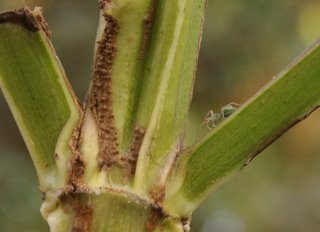 In a typical day I travel within a 2 mile radius circle. This space encompasses my needs to find food, oversee my offspring, conduct business, rest, obtain mental stimuli such as books, movies, music, and sometimes conversation; oh, and find a mate. Internet, water, power, and the daily newspaper are delivered to my nest; air, of course, is still freely available everywhere as is sunshine; and there's a big stack of firewood in the yard in case I get really cold. Sewage is flushed away and the trash men cometh every Thursday unless Monday was one of the holidays trash men observeth; then Friday. Boredom, I would say, is the most likely impetus for me to travel beyond this sphere of comfort, spawning the desire to go further out: to the CineArts theatre, on a visit to distant biologic relations, or to completely new environs to measure their life sustaining attributes against those of my present home. Sure I'm willing to create a new home circle in a new locale. Will it be as small as my current one, its size dictated by genetic or socio-psycho factors beyond my control?
In a typical day I travel within a 2 mile radius circle. This space encompasses my needs to find food, oversee my offspring, conduct business, rest, obtain mental stimuli such as books, movies, music, and sometimes conversation; oh, and find a mate. Internet, water, power, and the daily newspaper are delivered to my nest; air, of course, is still freely available everywhere as is sunshine; and there's a big stack of firewood in the yard in case I get really cold. Sewage is flushed away and the trash men cometh every Thursday unless Monday was one of the holidays trash men observeth; then Friday. Boredom, I would say, is the most likely impetus for me to travel beyond this sphere of comfort, spawning the desire to go further out: to the CineArts theatre, on a visit to distant biologic relations, or to completely new environs to measure their life sustaining attributes against those of my present home. Sure I'm willing to create a new home circle in a new locale. Will it be as small as my current one, its size dictated by genetic or socio-psycho factors beyond my control?  In green lynx spider terms, scaling down to their size, these two miles translate to about 170 feet for an adult lynx, and just about 20 feet for a spiderling. How far do lynx spiders travel in the course of their lives? This female spider laid her egg sac on October 9 2005 and has been perched on top of this shrub ever since. I had thought these spiders lived only one year, and so am curious to see what becomes of this old female in the coming spring and summer. If she mates again, it's easy to imagine her mate potential mates being her own offspring if the spiderlings don't travel too far. Is this inbreeding OK for lynx spider survival, or is it important to mix up the genetic stew?
In green lynx spider terms, scaling down to their size, these two miles translate to about 170 feet for an adult lynx, and just about 20 feet for a spiderling. How far do lynx spiders travel in the course of their lives? This female spider laid her egg sac on October 9 2005 and has been perched on top of this shrub ever since. I had thought these spiders lived only one year, and so am curious to see what becomes of this old female in the coming spring and summer. If she mates again, it's easy to imagine her mate potential mates being her own offspring if the spiderlings don't travel too far. Is this inbreeding OK for lynx spider survival, or is it important to mix up the genetic stew? This spiderling is likely one of the hundreds that hatched this past autumn within 10 or 15 feet
 of where this photo was taken. So far, he fits within my model sphere of comfort. Will he venture farther when he becomes sexually mature? One's intuition says "Yes". The female on the prosanthera shrub is about 100 feet from this fella and not likely to be his mother. When he matures will he travel 100 feet (about the same as me walking a mile or so . . . not really very far) in search of a genetically less similar mate? Or is it just not that important to mix one's genes when one is a green lynx spider?
of where this photo was taken. So far, he fits within my model sphere of comfort. Will he venture farther when he becomes sexually mature? One's intuition says "Yes". The female on the prosanthera shrub is about 100 feet from this fella and not likely to be his mother. When he matures will he travel 100 feet (about the same as me walking a mile or so . . . not really very far) in search of a genetically less similar mate? Or is it just not that important to mix one's genes when one is a green lynx spider? I don't know where the adult female was born; I am only guessing at where the spiderling was hatched. It would be great fun to mark next year's hatchlings to identify their nest sites, and
 see where they end up after they have grown. Yes such fun would likely keep me from becoming bored enough to leave the cozy sphere at least for a while.
see where they end up after they have grown. Yes such fun would likely keep me from becoming bored enough to leave the cozy sphere at least for a while.
No comments:
Post a Comment